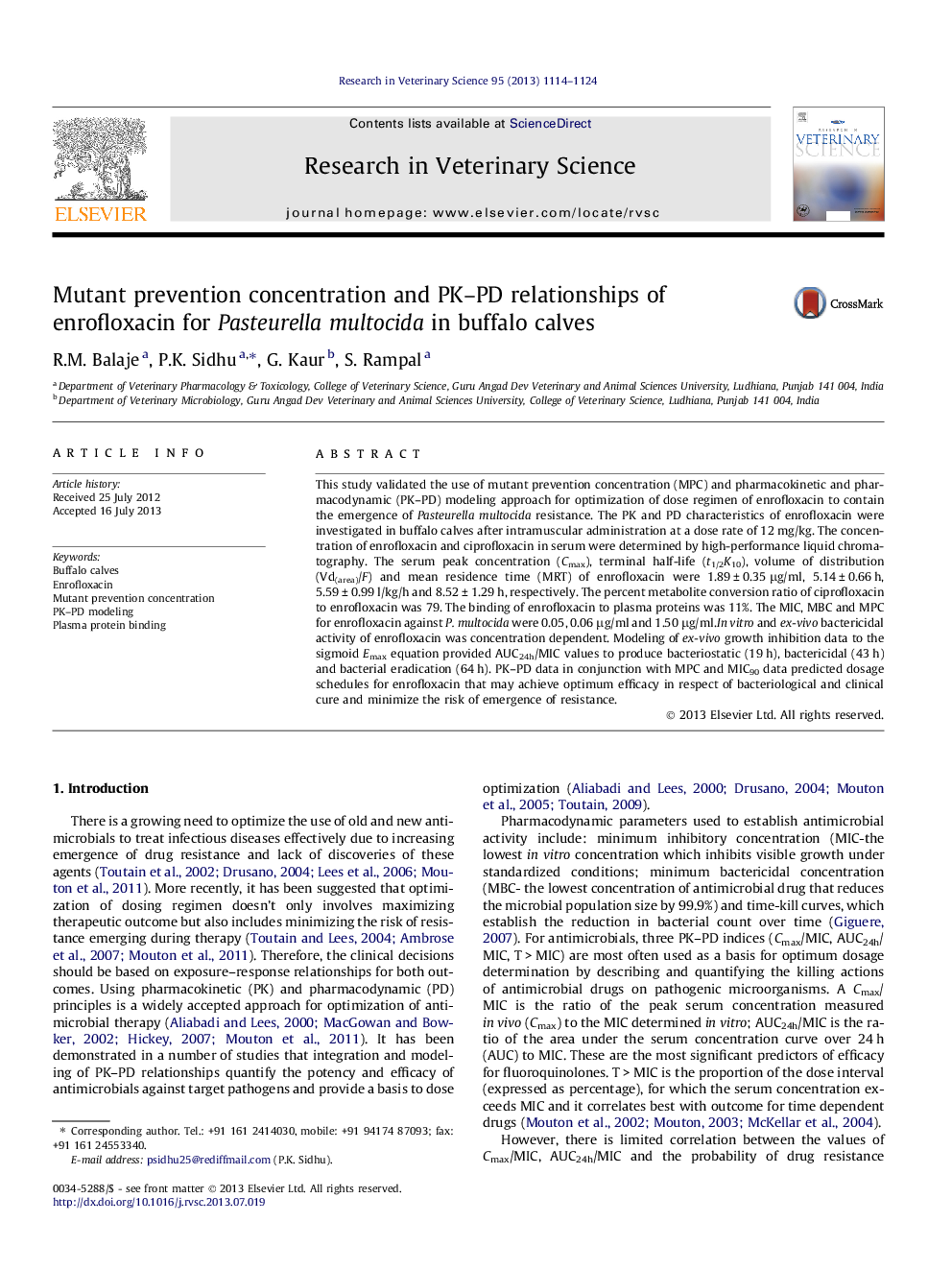| Article ID | Journal | Published Year | Pages | File Type |
|---|---|---|---|---|
| 2454824 | Research in Veterinary Science | 2013 | 11 Pages |
This study validated the use of mutant prevention concentration (MPC) and pharmacokinetic and pharmacodynamic (PK–PD) modeling approach for optimization of dose regimen of enrofloxacin to contain the emergence of Pasteurella multocida resistance. The PK and PD characteristics of enrofloxacin were investigated in buffalo calves after intramuscular administration at a dose rate of 12 mg/kg. The concentration of enrofloxacin and ciprofloxacin in serum were determined by high-performance liquid chromatography. The serum peak concentration (Cmax), terminal half-life (t1/2K10), volume of distribution (Vd(area)/F) and mean residence time (MRT) of enrofloxacin were 1.89 ± 0.35 μg/ml, 5.14 ± 0.66 h, 5.59 ± 0.99 l/kg/h and 8.52 ± 1.29 h, respectively. The percent metabolite conversion ratio of ciprofloxacin to enrofloxacin was 79. The binding of enrofloxacin to plasma proteins was 11%. The MIC, MBC and MPC for enrofloxacin against P. multocida were 0.05, 0.06 μg/ml and 1.50 μg/ml.In vitro and ex-vivo bactericidal activity of enrofloxacin was concentration dependent. Modeling of ex-vivo growth inhibition data to the sigmoid Emax equation provided AUC24h/MIC values to produce bacteriostatic (19 h), bactericidal (43 h) and bacterial eradication (64 h). PK–PD data in conjunction with MPC and MIC90 data predicted dosage schedules for enrofloxacin that may achieve optimum efficacy in respect of bacteriological and clinical cure and minimize the risk of emergence of resistance.
